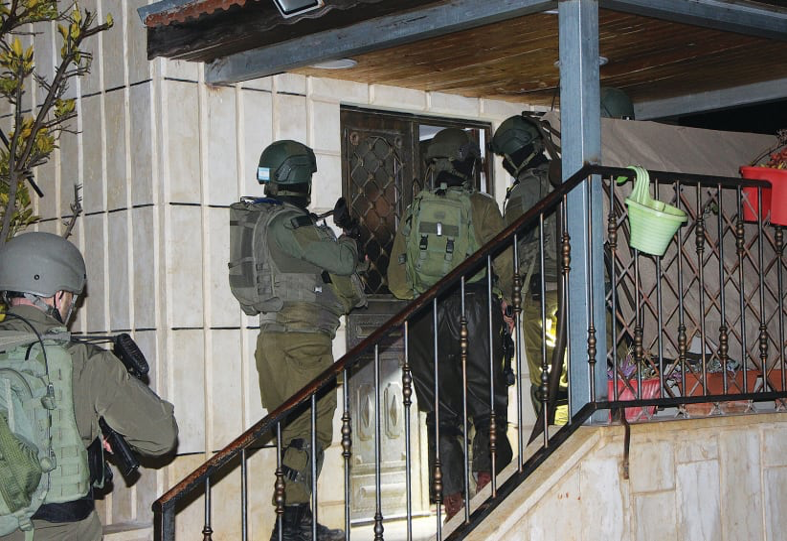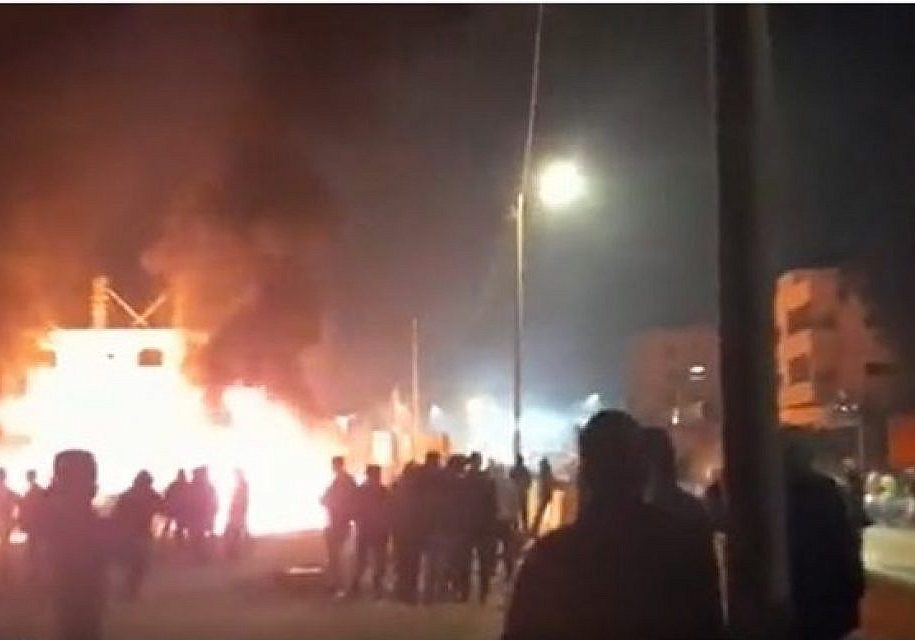Australia/Israel Review
West Bank story
Mar 28, 2024 | Jonathan Spyer

“You meet the terrorist at the end of the process, on the road, but there’s a whole system that leads up to that point, so if you can hit at what lies behind, and prevent it, then that works too,” Maj. Shlomo Ohayon tells me, as we sit in his command vehicle.
It is the very early hours of the morning, outside of the village of Seir al Shuyukh in Gush Etzion in the West Bank. There is dead silence all around, punctuated only by the crackle of the communications in the jeep. Ohayon is the deputy commander of Battalion 910, part of the IDF’s Etzion Brigade. The battalion, as part of its ongoing mission, has received a list of four individuals suspected of terror activity in the sector. They are setting out to apprehend these men.
Battalion 910 is a reserve formation made up of graduates of the Kfir Infantry Brigade. Mobilised immediately after October 7, they have spent the past four months in Gush Etzion, between Jerusalem and Hebron.
Events in the West Bank receive little coverage in Israeli and international media. With full-scale war underway in Gaza, something close to it on the northern border, and the region on the edge of conflagration, it isn’t hard to understand why. Nevertheless, it would be a mistake to ignore the simmering tensions in the area south of Jerusalem.
Battalion 910 has carried out more than 400 arrests of suspects since arriving in the sector. Those arrested are connected to a variety of organisations, and to none. The battalion has prevented a series of planned assaults on the Jewish communities in the area, and ongoing attempts to fire at vehicles.
This area, and the nature of its challenges, are somewhat familiar to me. It takes just 30 minutes on the quiet roads in the early morning hours to reach 910’s headquarters from my home in south Jerusalem. But more to the point, I spent a stint of reserve duty here, in a similar winter of fog and uncertainty, 24 years ago, in the opening months of the Second Intifada.
The conditions were different then, but the core issues remain much the same. The security of the highways leading to Jerusalem is paramount. Nowadays, this means intelligence-led operations into the villages adjoining the main arteries, where support for Hamas, Islamic Jihad, and other terror organisations is high.
Back in 2000, we couldn’t enter the populated areas because of the provisions of the Oslo Accords. The jeep patrols on the main roads would be fired at regularly from the villages, with little response. Two civilians, the engineer Tzachi Sasson and Dr Shmuel Gillis, were killed on the road at that time.
It’s different now. But nothing is resolved. This quickly becomes apparent. As the convoy enters Seir al Shuyukh, there is a sudden illumination of yellow light all around. Our jeep has been hit by a Molotov cocktail. The response is matter of fact. We keep moving, as quickly as possible given the circumstances, to the house where the reason for the mission is located.
The suspect’s home is located next to a school. The young man that the battalion is looking for is not connected to any organisation. There is intelligence that he has begun to prepare a private stock of Molotov cocktails. Another part of the force has approached the house from the opposite direction. It is quickly surrounded.
The arrest itself takes place with no particular drama. The target, a young man, offers no resistance. He is swiftly led away by two members of the force, his hands restrained by zip cuffs. We continue to El Aroub, where the next arrests are taking place.
Ohayon and his driver are both natives of Kiryat Arba, a short drive south of the Gush Etzion bloc. The IDF spokesperson’s representative in the jeep with us is from a national-religious family in Jerusalem. This representation reflects many of the interactions I have had with the IDF over the last months of conflict – in Gaza and the northern border as well as in the West Bank.
There is a very noticeable over-representation of people from Israel’s national-religious community in the frontline units of the IDF of 2024. This was mildly apparent even 24 years ago. It is now very pronounced. It may also be seen through perusal of the casualty figures.
Ohayon, however, is dismissive of any suggestion of local affiliations. “I’ve known this stuff all my life but it’s not what motivates me. There are people here from Tel Aviv too. And there’s a mission, and we need to carry it out. The mission is the defence of our home. And our home is the State of Israel. That’s what motivates me.”
The 910 Battalion has suffered no fatalities since it arrived in the area four months ago. One soldier was killed in a road accident. Two others have been wounded. This record belies the level of activity undertaken by the battalion and is a source of some pride.
“October 7 found us ready, because we’d already carried out active service that year,” Nomi, a major, and the operations officer for the 910 Battalion, tells me back at the battalion’s headquarters. Nomi, an immigrant from France, is a rare example of a female operations officer in one of the IDF’s combat battalions.
On October 7, when the 910 Battalion was mobilised, she was in Brittany with her family for the holidays.
“I woke up and saw the messages. And, you remember, the number of dead was rising throughout the day. So I knew I had to get back.”
She has been doing reserve duty with the 910 Battalion for six years. They had already been mobilised. “But only El Al was flying. So I managed to get to Paris, and I got a Paris-Marseilles flight, and then a flight to Israel. I got here after two days.” She has been in Gush Etzion since then.
“We know that there is weaponry in the villages. And many of the villages are aligned with Hamas. There was an attempt to run over one of our soldiers in El Aroub. The terrorist was killed immediately. And there’s firing sometimes on the Jewish communities. But from a distance, and not accurately.”
“In Adura, there was an attempted attack, just a week ago. The terrorists had M16s and axes. And just two days ago, in Halhoul, we arrested people from the Islamic Jihad,” Alon, a deputy company commander, another graduate of the Kfir Brigade, tells me, after the arrests are done and the night’s business mainly concluded.
Alon, a medical student in Beersheba, has been in Gush Etzion since Oct. 8, like the others.
This is a snapshot of a simmering potential third front, on which the lid is currently being kept, with much ongoing effort. The underlying logic of the situation is identical to that of the other arenas, though the balance of the sides is very different.
Noted Israeli writer Yossi Klein Halevi, at a recent event in Jerusalem, said that Israeli society’s response to October 7 and what has followed indicated that Israelis retain an “intuition of peoplehood.” It is a memorable phrase. I think he was referring to the instant, instinctive solidarity and mobilisation that was witnessed in the first days, replacing the fractious divisions of the preceding months.
This intuition, it seems to me, may be witnessed in its steadiest and purest form in the frontline units of the army, both regular and reserve.
This is a consolation for the fact that a quarter of a century on from my own generation’s turn, some of the best young people of Israel are still out there in the night, dealing with the machinery of conflict, a 30-minute drive from downtown Jerusalem.
Jonathan Spyer is director of research at the Middle East Forum and director of the Middle East Centre for Reporting and Analysis. He is author of Days of the Fall: A Reporter’s Journey in the Syria and Iraq Wars (2018). © Jerusalem Post (www.jpost.com), reprinted by permission, all rights reserved.
Tags: IDF, Israel, Palestinians, West Bank






